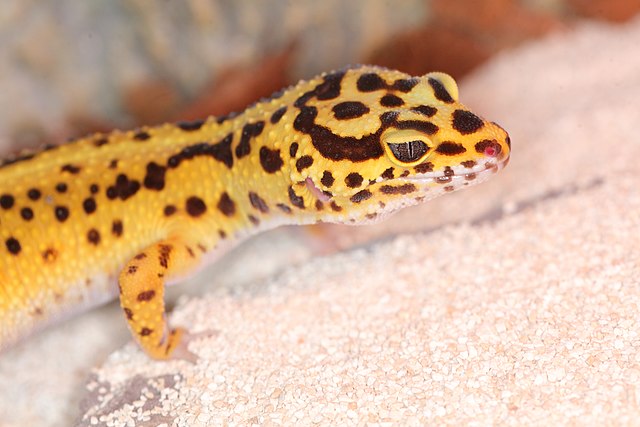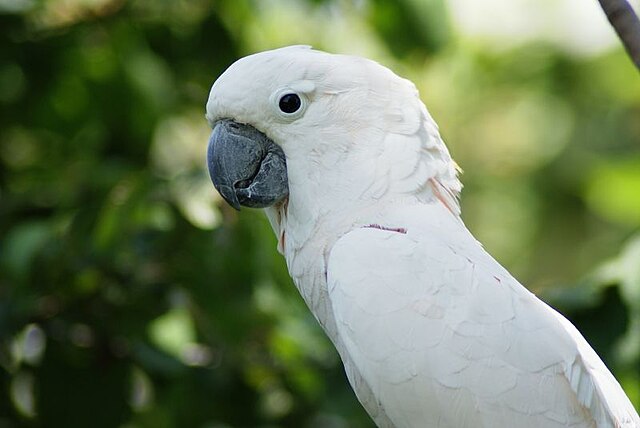Female Betta fish, scientifically known as Betta splendens, are some of the most captivating and colorful aquatic creatures you can keep as pets. These stunning fish, often overlooked in favor of their more flamboyant male counterparts, possess their own unique charm and characteristics that make them a delightful addition to any aquarium. In this comprehensive guide, we will dive deep into the world of female Betta fish, exploring their habitat, care requirements, breeding, and much more.
The Elegance of Female Betta Fish
Female Betta fish are renowned for their grace and elegance. Their vibrant colors, intricate fins, and engaging behavior make them a true delight for aquarists and enthusiasts alike. Unlike males, females do not typically boast the long, flowing fins and bold coloration; however, they possess a subtle beauty that becomes more apparent the longer you observe them. With shades of red, blue, green, and even yellow, female Bettas are a living canvas of nature’s artistry.
Habitat and Tank Requirements
The thriving beauty of female Betta fish is best witnessed when they are provided with a suitable and well-maintained habitat. In this section, we will delve into the specific tank requirements that ensure the optimal health and happiness of these exquisite aquatic companions.
Tank Size Matters
First and foremost, when considering the ideal environment for your female Betta fish, tank size is of utmost importance. While females tend to be smaller than their male counterparts, they still require ample space to thrive. A tank with a minimum capacity of 10 gallons is highly recommended. This generous space allows your female Bettas to swim freely, explore their surroundings, and exhibit their natural behaviors without feeling cramped or stressed.
The Importance of Filtration and Aeration
For your Betta’s well-being, maintaining clean and oxygen-rich water is a priority. Proper filtration and aeration are essential components of this equation. A sponge filter, known for its gentle water movement, is an excellent choice for Betta tanks. This type of filter ensures that your Betta fish can enjoy calmer waters, more in line with their preferences, while still benefiting from efficient filtration.
Temperature and Lighting Control
Maintaining the right environmental conditions is key to keeping your female Betta fish vibrant and content. These tropical beauties thrive in water temperatures ranging from 75 to 82°F (24-28°C). It’s crucial to invest in a reliable aquarium heater to maintain this temperature range consistently. Additionally, consider providing gentle, indirect lighting to mimic their natural habitat, allowing them to showcase their stunning colors and patterns.
Aquatic Abode: Plants and Hiding Spots
Enhancing your Betta’s habitat with carefully chosen elements can significantly enrich their lives. Live or silk plants not only add aesthetic appeal but also serve as hiding spots and resting places. Female Bettas will appreciate the opportunity to explore the lush foliage, which can reduce stress and encourage natural behaviors. Additionally, including caves or decorations as hiding spots will provide them with a sense of security.
Regular Maintenance and Water Quality
Lastly, maintaining a healthy environment for your female Betta fish requires diligence. Regular water changes are essential to remove accumulated waste and ensure pristine water quality. Aim for partial water changes of about 20-25% every one to two weeks, while also vacuuming the substrate to eliminate debris.
By adhering to these tank requirements, you will create a harmonious and thriving habitat for your female Betta fish. With the right balance of space, water quality, and environmental enrichment, your Betta companions will flourish, showcasing their elegance and vibrant personalities for years to come.

Feeding and Diet
Ensuring the health and vitality of your female Betta fish hinges on providing them with a well-rounded and nutritious diet. In this section, we’ll explore the intricacies of feeding your Bettas, offering insights into their dietary preferences and requirements.
High-Quality Pellets
At the heart of your Betta fish’s diet should be high-quality Betta pellets. These specially formulated pellets are designed to meet their nutritional needs effectively. When selecting pellets, prioritize those with a high protein content, as protein plays a pivotal role in maintaining your Betta’s health and vibrant colors. These pellets are readily available in most pet stores and can serve as the primary staple in their diet.
Live and Frozen Foods
While Betta pellets are a dietary cornerstone, adding variety to their menu can contribute to their overall well-being. Treating your female Bettas to occasional live or frozen foods can mimic their natural diet and keep them engaged. Consider offering delicacies like brine shrimp, bloodworms, and daphnia. These small creatures not only pique your Betta’s interest but also provide essential nutrients that promote growth and vitality.
Vegetables
Infrequently, you can introduce small portions of blanched vegetables into your Betta’s diet. This fiber-rich addition can aid in digestion and provide a well-rounded nutritional profile. Peas, lightly cooked and finely chopped, are a suitable choice. However, it’s crucial to offer vegetables sparingly, as Bettas are primarily carnivorous, and overdoing it with greens can lead to digestive issues.
Feeding Guidelines
Feeding your female Betta fish is a delicate balance. Overfeeding can lead to obesity and water pollution, while underfeeding can result in malnutrition. It’s advisable to feed them in small portions, only what they can consume in a few minutes. This practice prevents overeating and maintains water quality. Generally, two to three small feedings per day are sufficient to meet their nutritional needs.
Water Quality and Diet
It’s essential to recognize the connection between water quality and your Betta’s diet. Leftover food can quickly degrade water quality, leading to issues like ammonia spikes and deteriorating health for your Bettas. Regularly remove any uneaten food using a turkey baster or siphon to maintain a clean and healthy environment.

Social Behavior
Female Betta fish are relatively peaceful compared to their male counterparts. However, it’s essential to understand their social dynamics:
- Tank Mates: Female Bettas can coexist with other non-aggressive fish species like Corydoras, neon tetras, or small rasboras. Avoid housing them with aggressive or fin-nipping fish.
- Sorority Tanks: Setting up a female Betta sorority can be rewarding, but it requires careful monitoring and a larger tank to prevent territorial disputes.
Breeding Female Betta Fish
Breeding female Bettas can be a fascinating endeavor for experienced aquarists. Here’s a brief overview of the process:
- Conditioning: Separate the breeding pair and feed them a high-protein diet to prepare for breeding.
- Introduce the Female: Place the female into the breeding tank with plenty of hiding spots and plants.
- Spawning: The male will build a bubble nest, and the female will lay her eggs. The male will then fertilize the eggs and protect the nest.
- Post-Breeding Care: After spawning, remove the female to prevent aggression from the male. Care for the fry by providing them with tiny food particles and pristine water conditions.
Common Health Issues
While female Betta fish are known for their hardy nature, they are not immune to occasional health challenges. In this section, we will explore the common health issues that can affect these captivating aquatic companions and provide guidance on how to identify, prevent, and address them effectively.
Fin Rot
Symptoms: One of the most prevalent issues, fin rot, is characterized by the deterioration of the fins. You may notice frayed or discolored fin edges.
Causes: Poor water quality, stress, or bacterial infections can lead to fin rot.
Prevention and Treatment: To prevent fin rot, maintain clean water conditions through regular water changes. In cases of infection, consult a veterinarian for proper treatment, which may include antibiotics.
Ich (White Spot Disease)
Symptoms: Ich manifests as small white spots on the fish’s body, resembling grains of salt. Infected fish may also exhibit scratching against tank objects.
Causes: Ich is often the result of stress or poor water conditions, which weaken the fish’s immune system.
Prevention and Treatment: Maintain consistent water parameters, avoid sudden temperature changes, and ensure a stress-free environment. If your Betta contracts ich, raise the water temperature gradually and consider medication as recommended by a veterinarian.
Constipation
Symptoms: Betta fish suffering from constipation may exhibit bloating, loss of appetite, or difficulty swimming.
Causes: Overfeeding, inadequate diet, or poor water quality can lead to constipation.
Prevention and Treatment: Feed your Betta a balanced diet, and avoid overfeeding. Consider offering small portions of blanched peas as a natural remedy. Ensure excellent water quality to alleviate stress and promote recovery.
Dropsy
Symptoms: Dropsy is characterized by swelling of the Betta’s abdomen, giving it a pinecone-like appearance. Affected fish may also appear lethargic.
Causes: Dropsy is often a result of internal bacterial infections or organ failure.
Prevention and Treatment: To prevent dropsy, maintain a clean environment and feed a balanced diet. If your Betta shows signs of dropsy, consult a veterinarian for potential treatment options.
Velvet Disease
Symptoms: Velvet disease presents as a fine, golden or rust-colored dust on the fish’s skin, giving it a velvet-like appearance. Infected fish may also display rapid gill movement and lethargy.
Causes: Parasites, particularly protozoa, are responsible for velvet disease.
Prevention and Treatment: Maintain excellent water quality and ensure quarantine for new fish to prevent the introduction of parasites. Consult a veterinarian for appropriate medication if your Betta contracts velvet disease.
While common health issues can affect female Betta fish, proactive care and attention can significantly reduce the risk and severity of these problems. Regular water maintenance, a balanced diet, and stress reduction measures are essential components of Betta care.

Conclusion
In this comprehensive guide, we’ve explored the captivating world of female Betta fish, from their elegance and habitat requirements to their social behavior, breeding, and common health issues. These enchanting aquatic creatures offer aquarists a unique and rewarding experience, and with proper care and attention, they can thrive and flourish in your aquarium.








